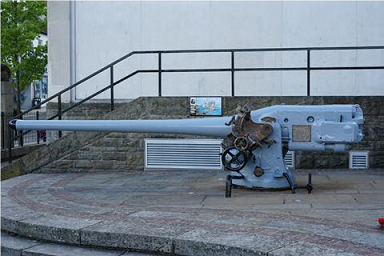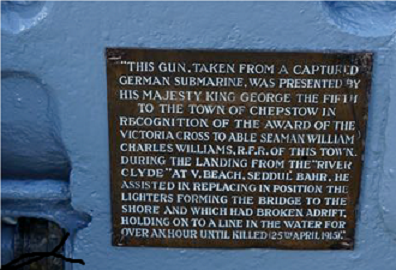GALLIPOLI DAY 25th APRIL


The 25th of April, is Australian and New Zealand Army Corps, or ANZAC Day that recalls the Gallipoli campaign of the First World War in 1915 that saw 100,000 allied lives lost.
On April 25, 1915 a major landing was part of an invasion of the Gallipoli peninsula in Turkey by Allied forces. A Royal Navy rating by the name of William Charles WILLIAMS was part of that Allied force. Able Seaman WILLIAMS was raised here in Chepstow and joined the Royal Navy Boys Service in Portsmouth in 1895. During his career, he served on eighteen different ships. In 1910 he returned to civilian life and served in the police force in Newport, St Mellon’s and Risca, and also worked at the Newport steel works. But in August 1914 was recalled to serve in the Great War.
At Gallipoli, with the support of the guns of the Royal Navy, a British division was to seize the heights overlooking the beaches. WILLIAMS was serving in HMS River Clyde that, together with a number of transport barges towed behind her, carried 2,000 soldiers.
The plan was to come alongside another ship that would have already been beached to form a jetty from which to disembark the soldiers in the shallow waters. But that other ship was unable to reach the shore. As they approached the beach, heavy enemy fire continuously raked the entire beach.
Two companies of soldiers emerged from the River Clyde and tried to reach the shore but they were cut to pieces, suffering 70% casualties.
Later, another company made an attempt which also failed. So the Captain of the River Clyde led WILLIAMS and others outside to manhandle three of the transport barges into place to form a bridge to the shore.
Under intense machine gun and shell fire WILLIAMS stood alongside the commander of the HMS River Clyde, chest deep in the sea holding a rope keeping the drifting barges together and helping two battalions of soldiers to disembark onto the beach.
Able Seaman Williams, who was 34, died at Gallipoli exactly 106 years ago, on 25 April, 1915 performing an act of bravery.
The official entry in the Register of Victoria Cross Holders states: "Williams was eventually dangerously wounded and later killed by a shell whilst his rescue was being effected by his commander who described him as the bravest sailor he had ever met". He was posthumously awarded the Victoria Cross.
Members of that brave seaman's family are with us here today.
There are two memorials to WILLIAMS here Chepstow
- a painting showing his bravery at Gallipoli that hangs in St Mary's Church
- and the 105mm gun from the German submarine UB91 that surrendered to the Royal Navy that was presented by King George V to the town of Chepstow in recognition of the bravery of William Charles WILLIAMS Royal Navy, Victoria Cross.
- There is also a fine display of information in the Town Museum.
We, the people of the United Kingdom, still ask our soldiers, sailors and airmen to stand into danger for causes that we believe to be right.
And within the many acts of bravery that are demonstrated every day by our Servicemen there are occasionally the most exceptional of personal brave deeds. Acts of valour.
Able Seaman WILLIAMS demonstrated his totally unselfish commitment to those soldiers for whom he was responsible.
We would all do well to follow the example of William WILLIAMS, this Chepstow man, and try to think always of how we might help others in our everyday lives.
Christopher WILSON
Commander Royal Navy
President
RNA Chepstow & District Branch